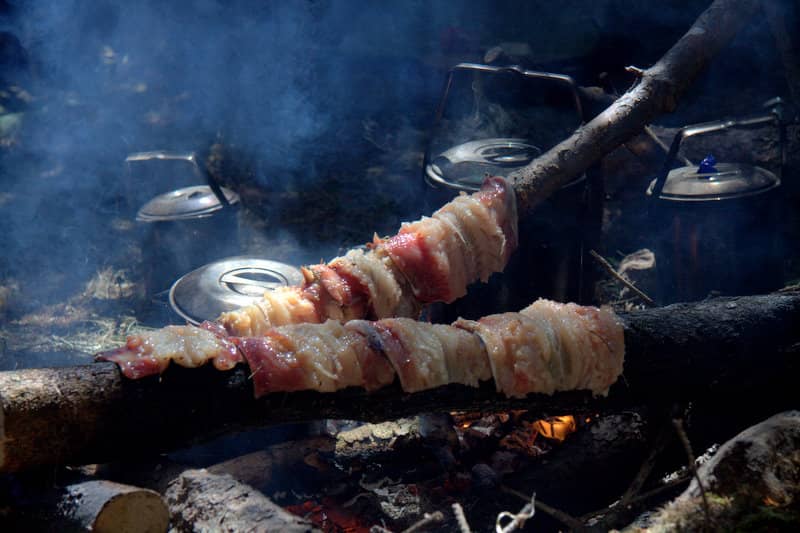15 Things Every Survivalist Needs to Know About Trees
Daniel Xu 06.10.17

The next time you go camping, hunting, or hiking in the outdoors, take a good look around. What do you see? Odds are that somewhere in your answer is “a whole lot of trees.” If you are in or near a forest, your greatest resource is also your most abundant one. Trees are a great way to obtain firestarting material, wood to craft tools from, and even nourishment. Here are 15 things that every survivalist needs to know about trees and their uses, organized by type of tree.
Pine trees
1. Pine needle tea
Pine trees, especially white pines, are known for their medicinal properties and their needles are just full of vitamin C. Brewing up some pine needles will give you a quick boost of vitamin C and even improve your immune system. In fact, it may even save you from scurvy.
You can learn how to brew your own below:
2. Pine sap first aid
Think of pine sap as nature’s Band-Aid. When combined with some bark, raw pine sap can be used to bandage up minor cuts and wounds, even working as an antiseptic!
3. Building materials
You can pillage a pine tree freely for building materials and surface layer roots make for great cordage. Nearly everything in the tree can be used for your shelter, including needles for insulation and boughs for shingling.
4. Pine resin
Pine resin is an excellent material to use in waterproofing shoes, clothing, or containers. It can also be used to form makeshift candles, although getting enough resin for one may be difficult.
Here’s how you extract the resin:
White Birch
5. Excellent containers
The bark of a white birch can make great, easy-to-build containers and even river-faring vehicles like canoes. While you may not spend enough time in the wild to build your own canoe, it can still come in handy.
Learn how to make birch containers below:
6. Fire making
Birch are great for firestarting, whether with their dry bark or the fungus that grows on them. Scrap off some bark and you’ll have enough shavings to last you the duration of your trip.
Maple trees
7. Maple sap
Duh. Maple sap is sweet, high in energy (sugar), and relatively easy to get to. It may not be like the maple syrup you’re used to be, but it’s clean, sugary, and requires no purification.
How to tap a maple tree:
8. Edible seeds and leaves
It’s not the best-tasting salad you’ll ever have, but if you’re roughing it—or in full-on survival mode—a meal of maple seeds and leaves will seem like a feast. Both the leaves and seeds may be bitter, so it is advisable to boil in hot water before eating.
Black walnut
9. Rust prevention
Iodine prevents rust on tools, such as knives and axes. In his book Bush Craft 101, Dave Canterbury writes that the green hulls can be rubbed on steel blades to give them a nice patina, which protects against rusting.
10. Fish poison
Canterbury also adds that the chemical jugalone can be extracted from black walnut hulls. Gather some and crush them, then place the remains in a small pond for a poison that can stun fish.
Oak trees
11. Tools
Oak is legendary for its use in tool-making, and if you have the right gear with you, this is something you can take advantage of. Oak wood is especially useful for making primitive bows, axe handles, and shelter frameworks.
12. Acorns
Acorns have a multitude of uses, including being ground up into acorn bread, being used for squirrel baiting, and as a source of tannic acid. In turn, the acid can be used to tan leather or to treat wounds and minor diarrhea.
How to make acorn bread:
Willow trees
13. Salicin
A chemical that acts like a pain reliever, salicin can be obtained by chewing on twigs and directly on the bark. Some say it even treats inflammation, which can be a big help in the backcountry.
14. Highly flammable
Dry willow wood is great for hand or bow drills and are highly flammable when made into tinder piles.
15. Great for weaving
You may have noticed that willow wood is also very soft, which makes it extremely pliable to make tools out of or for weaving baskets for storage.
You can watch how a willow basket is made below:

